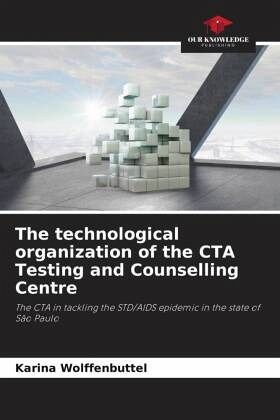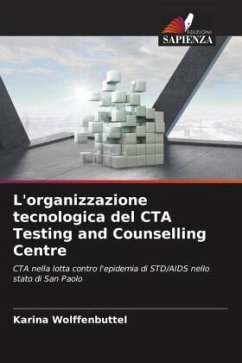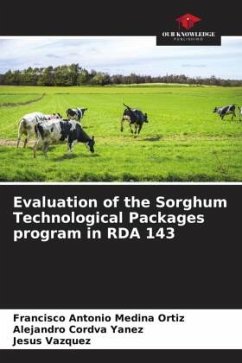
The technological organization of the CTA Testing and Counselling Centre
The CTA in tackling the STD/AIDS epidemic in the state of São Paulo
Versandkostenfrei!
Versandfertig in 6-10 Tagen
43,99 €
inkl. MwSt.

PAYBACK Punkte
22 °P sammeln!
Since 1988, Testing and Counseling Centers (CTA) have been set up in Brazil to facilitate access to HIV testing. In the state of São Paulo, the CTAs have tried to respond to the changing dynamics of the AIDS epidemic and have been modifying their organization, the way they operate and the concept of their role in the context of the Unified Health System (SUS) and the STD/AIDS Programme. This has resulted in great heterogeneity in their structural, organizational, managerial and programmatic aspects. Within this diversity, we have observed a growing choice to set up CTAs within other health un...
Since 1988, Testing and Counseling Centers (CTA) have been set up in Brazil to facilitate access to HIV testing. In the state of São Paulo, the CTAs have tried to respond to the changing dynamics of the AIDS epidemic and have been modifying their organization, the way they operate and the concept of their role in the context of the Unified Health System (SUS) and the STD/AIDS Programme. This has resulted in great heterogeneity in their structural, organizational, managerial and programmatic aspects. Within this diversity, we have observed a growing choice to set up CTAs within other health units. In this study we sought to characterize two types of CTA - CTA "inserted in a health unit" and CTA as a health unit in itself - and analyse their insertion in the primary care services network. We opted for a qualitative approach, through a case study of two CTAs selected according to the modalities mentioned above. The categories "technological organization" and "comprehensiveness" wereused to analyze the cases.














